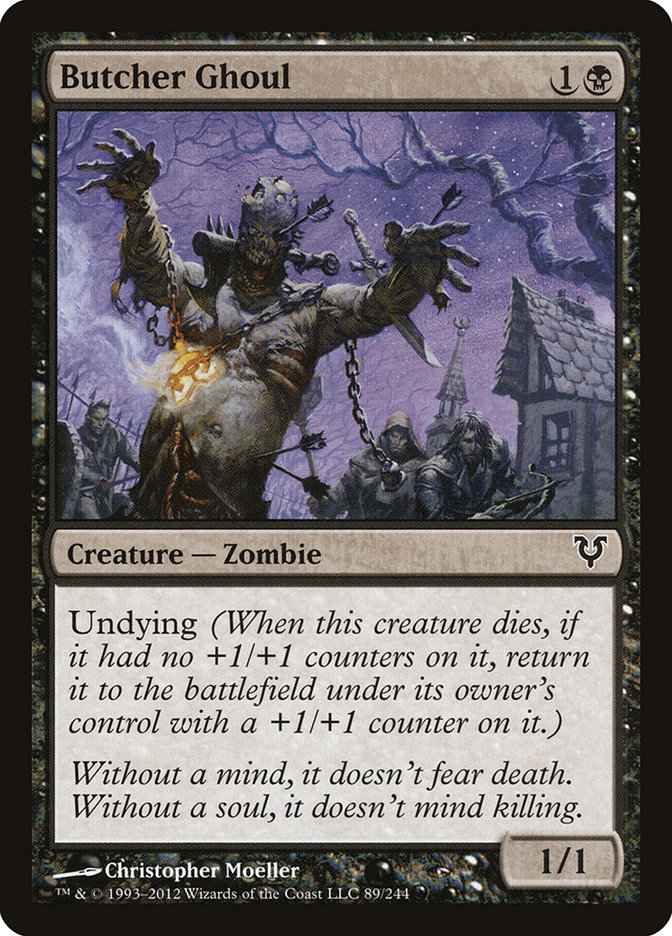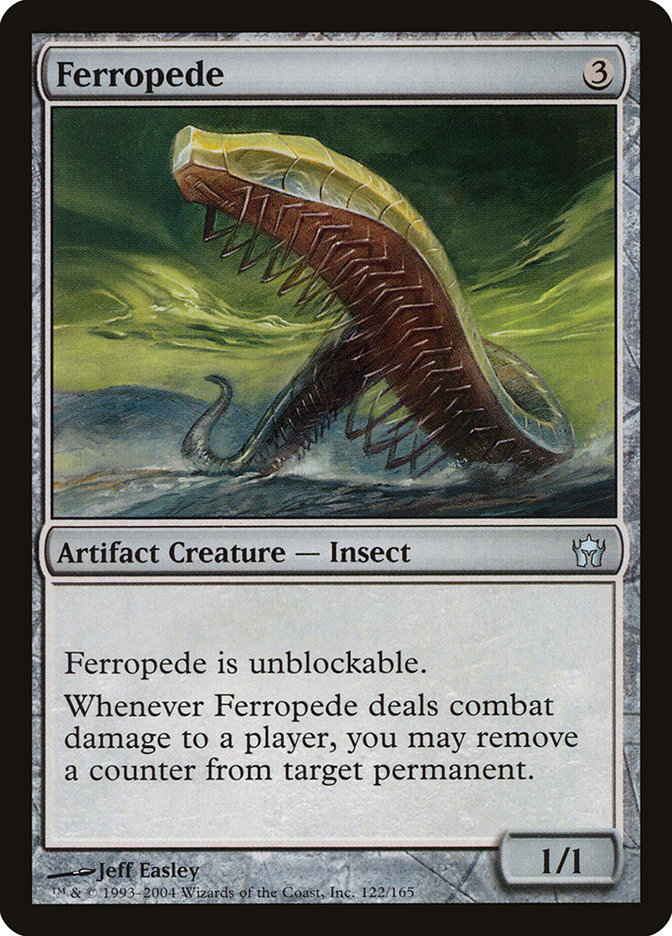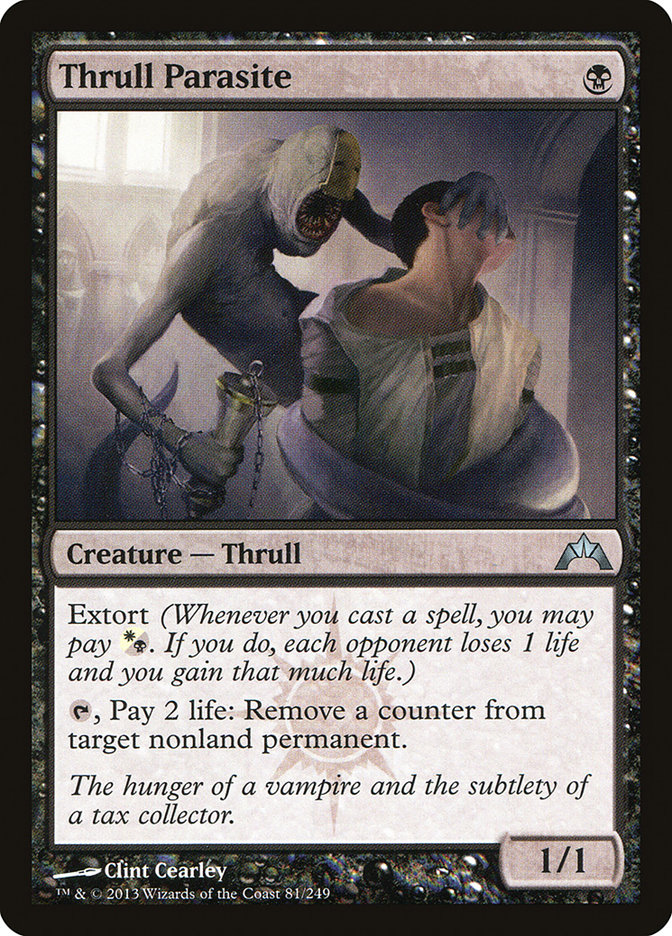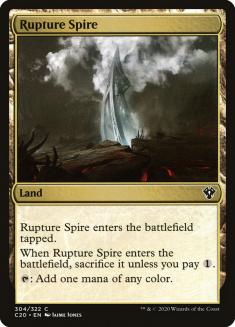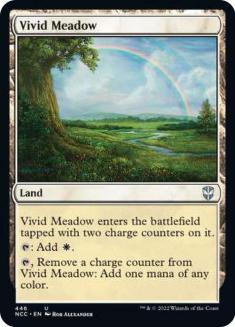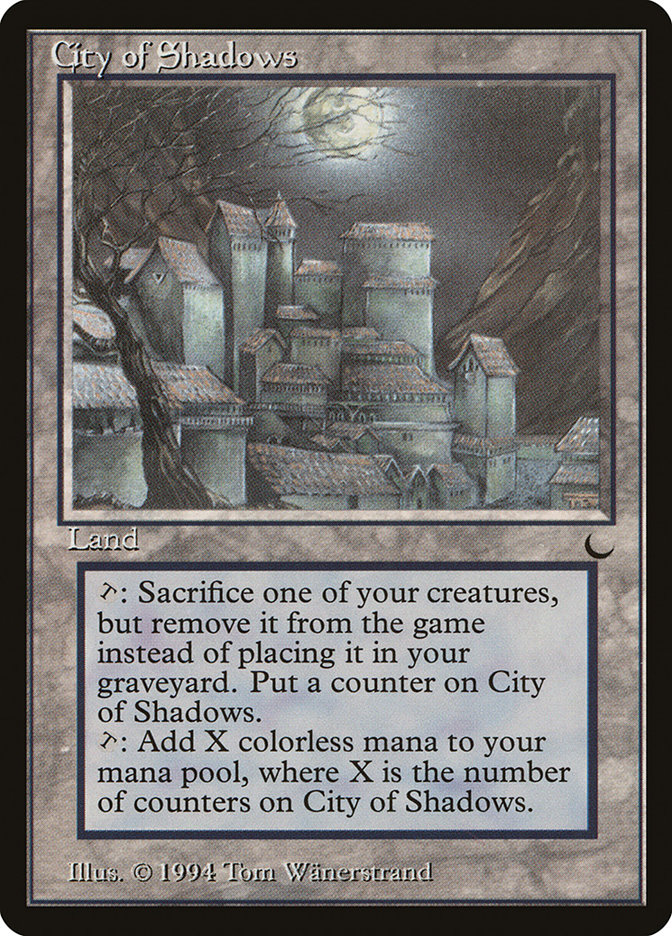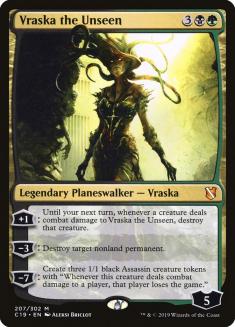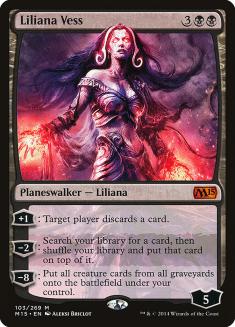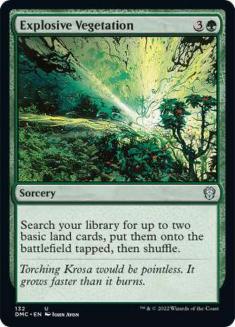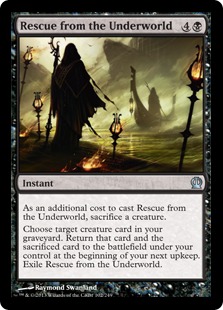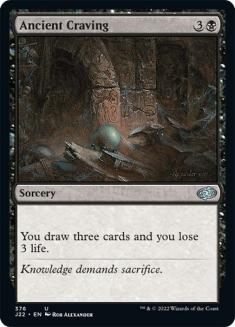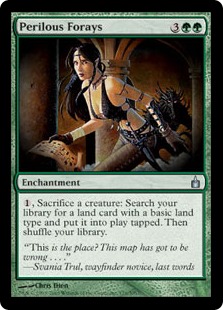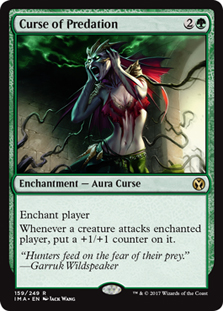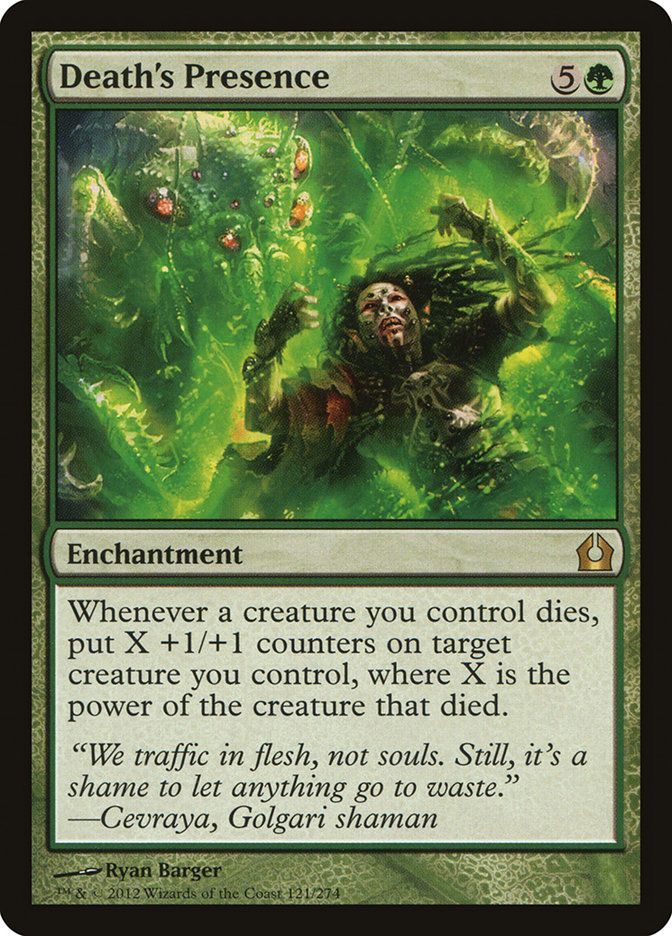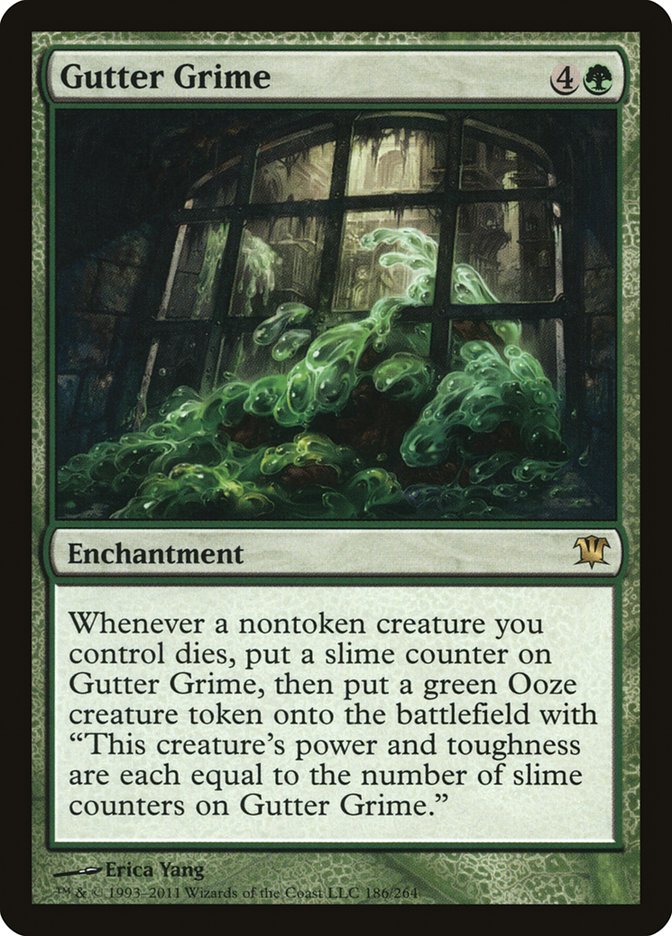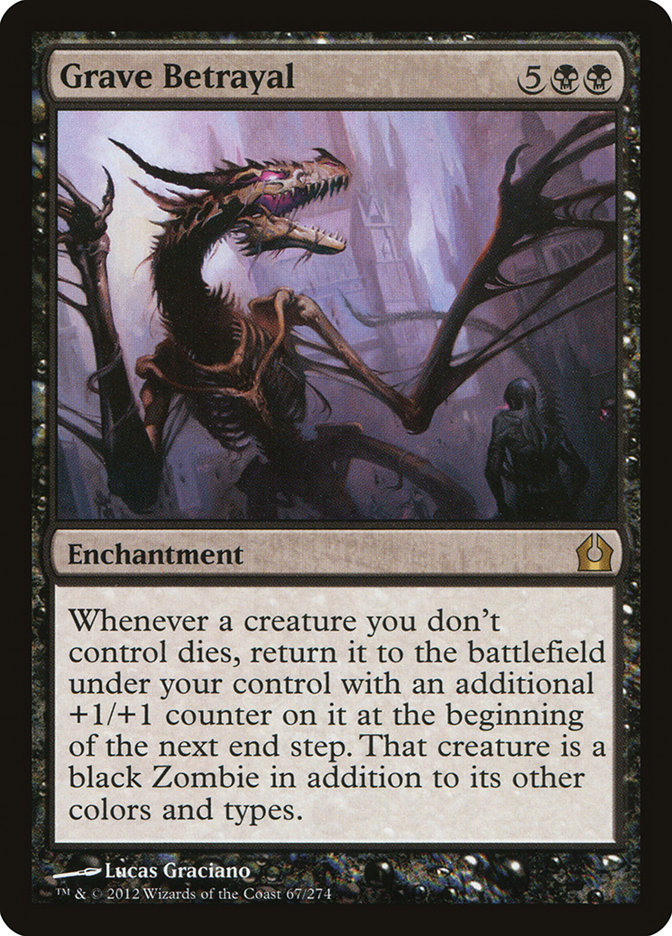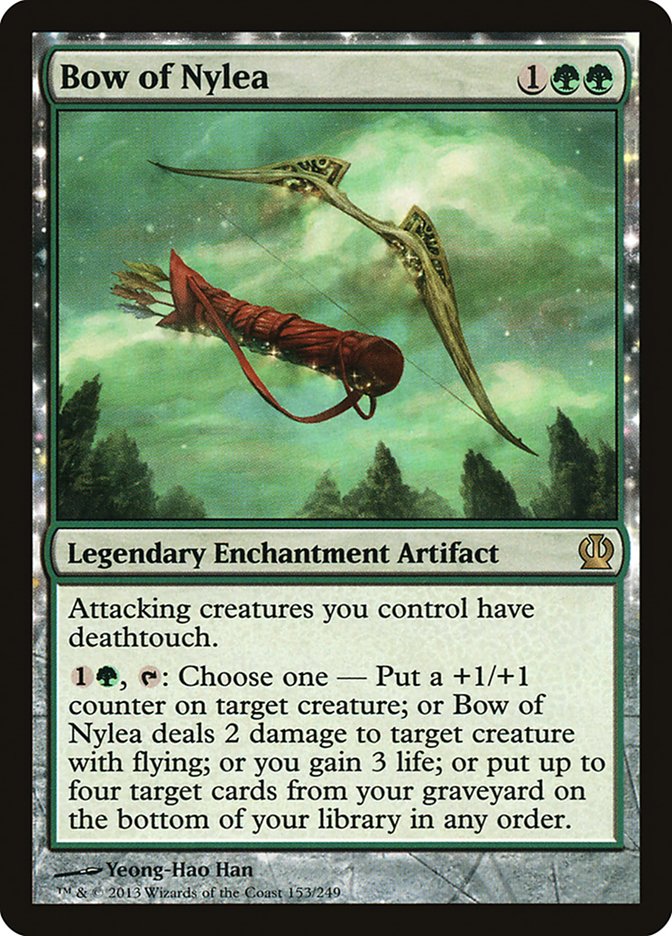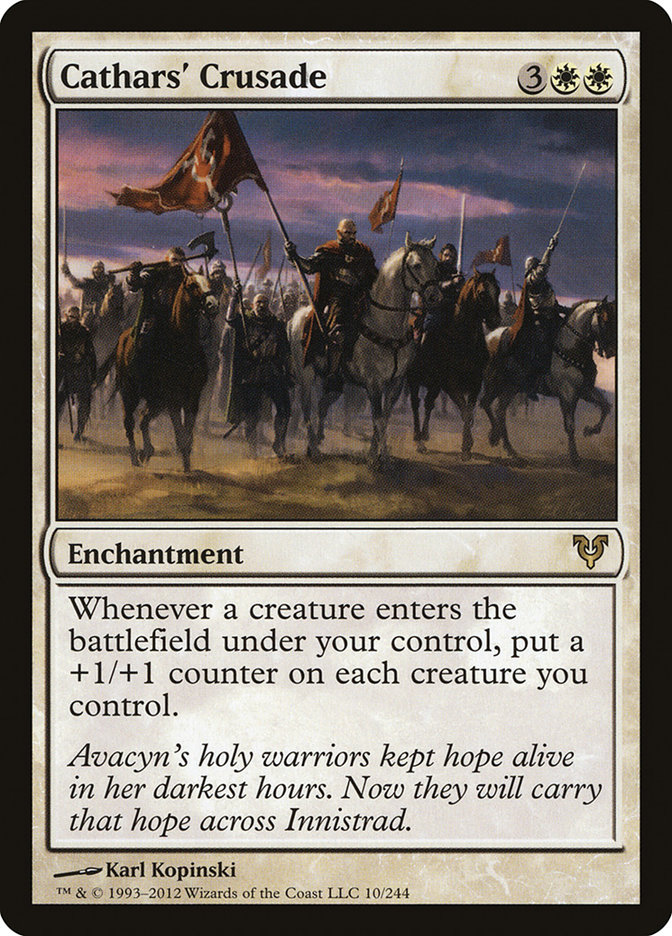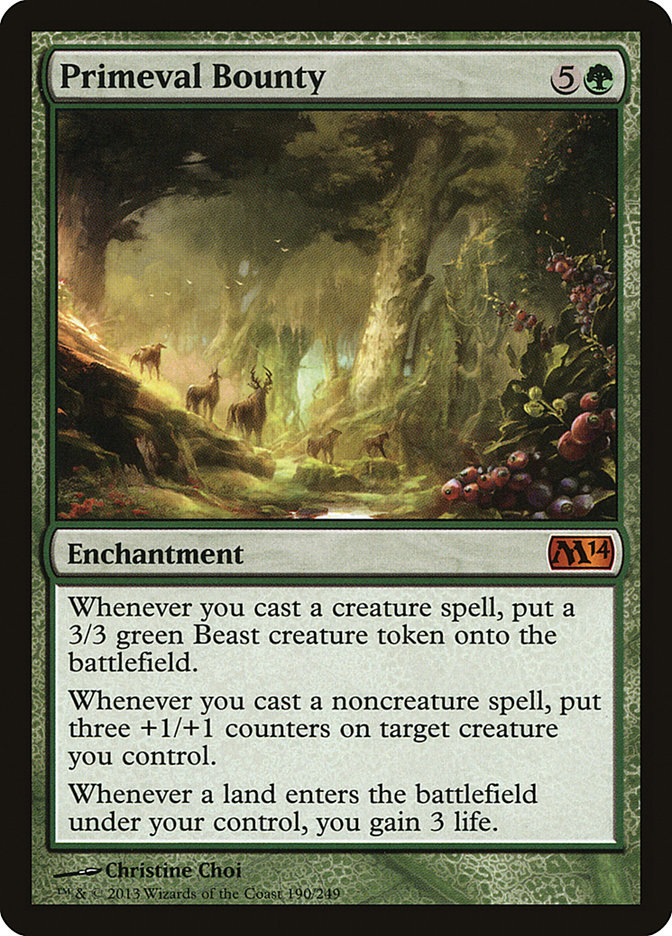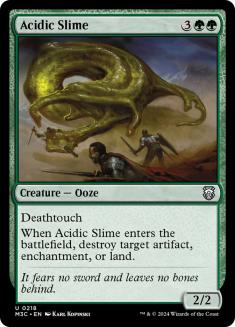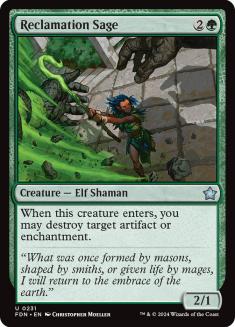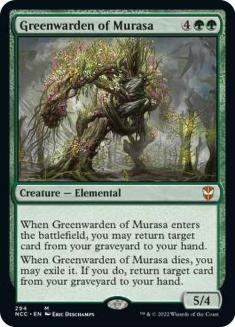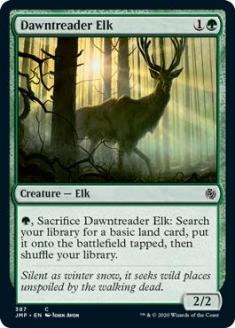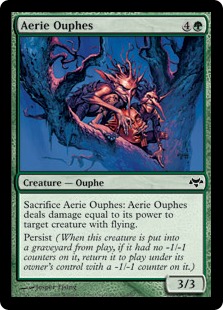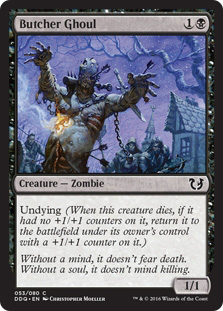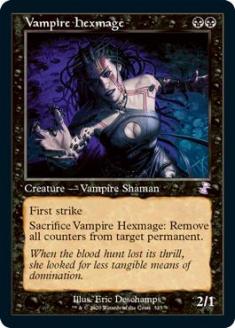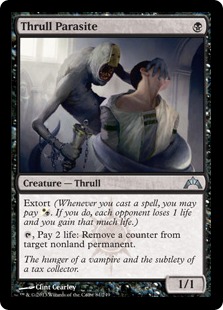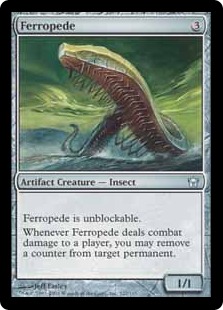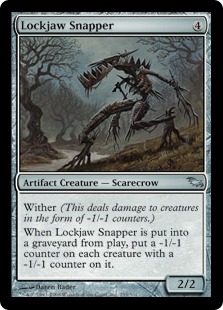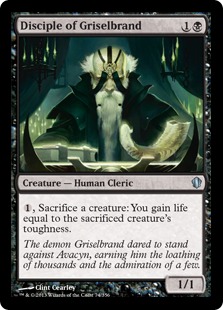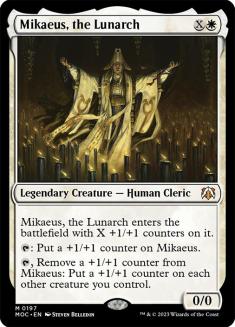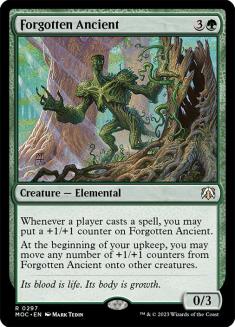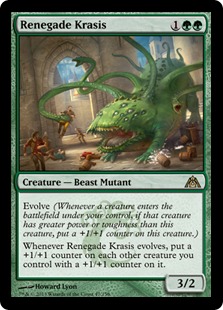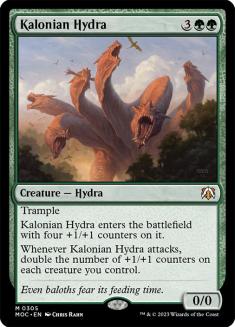Dear Azami,
I need your help to recapture the joy of days long past.
I first got into (then) EDH / (now) Commander in order to keep playing Niv-Mizzet, the Firemind after he rotated out of Standard. Years later, I’ve been trying to recreate another one of my early decks that gave me a great deal of joy and laughter, but I’m having very little success. The original deck used Blowfly Infestation and Pyrrhic Victory to kill a huge number of creatures and then resurrect them all (usually for them all to die again shortly thereafter). Using Flourishing Defenses, I could also pump out huge numbers of Elf tokens and win the game every now and then.
So I recently tried to recreate this experience in Commander, using Daghatar the Adamant as a way of being tricky with all kinds of counters. Unlike Ghave, Guru of Spores, Daghatar can steal counters from your opponents, using their +1/+counters to neutralize your persist counters. All well and good, but in actual gameplay it doesn’t do anything. I can stall the battlefield and not die for a while, but eventually it all collapses.
I want maximum shenanigans but no infinite combos (hence the lack of Melira, Sylvok Outcast). I want to maximize unusual cards that hardly ever appear in Commander decks (Hex Parasite, Tornado, Pyrrhic Revival), but without spending too much money.
Help me Dear Azami, you’re my only hope!
Commander
Undying/Persist
Counter Adding/Removing
Counter Shenanigans
Counter-Based Removal
Other Removal
Ramp
Sacrifice Outlets
Utility
Utility Lands
Other Lands
8 Forest
5 Plains
8 Swamp
I’m not gonna lie. You had me at Blowfly Infestation.
The problem with this deck is unfortunately easy to diagnose, and it starts right here:
To put it simply, a 1/1 creature in Commander is close to blank cardboard. The text box has to be pretty great to make it worth your while. So my overarching goal here will primarily focus on making the deck stronger by cutting the weaker draws, with a secondary goal of trying to remedy the late-game problem you’ve described by giving the deck a stronger early game.
We still want the hilariously fun and unexpected things to happen, and I appreciate the value you are placing on unusual cards as well, so we’ll try to make some interesting things happen in unexpected ways and just use a bit higher-quality cardboard to do it.
The advantage this deck has with its seemingly-unplayable Draft leavings is that the creatures you’re harnessing for their access to +1/+1 or -1/-1 counters are all pretty cheap. You can actually expect to get a beatdown draw if you plan for it, and you just need to put the new cards towards supporting that possibility in order to avoid that problem where you end up stuck waiting to die on turn 20 with nobody eliminated yet. They’re still going to get beaten down by Core Prowlers and various Hatchlings, but these seemingly bad cards are going to both mess around with counters and have the option of becoming Commander-sized creatures in their own right.
We begin as we often do by examining your lands; the land cycles tell me this is definitely a budget deck, since we’re leaning on Guildgates and Khans of Tarkir lifegain two-color lands instead of fetchlands and shocklands. We won’t change that because it’d cost too much to build a “better” manabase… and not actually reap that significant a benefit for doing so, this is already basically functional. We would end up with fewer lands that enter the battlefield tapped, but that doesn’t really seem to be a liability here.
Most of your cards are cheap, so you shouldn’t have a big problem figuring out how to sequence your land drops in the early turns just by looking at your opening hand. Isolated Chapel, Windswept Heath, and Overgrown Tomb are all great lands, but they aren’t necessary to stay competitive in Commander, so we’ll just make sure you’re playing all of the best cheap options available to us and fill out any missing two-color lands from the cycles you were already playing.
First we have our cuts:
Rupture Spire and Vivid Meadow are being cut because we can definitely do better; for minimal cost, they instead become Sandsteppe Citadel and Command Tower. The four basics make room for a few other lands that are mostly still fairly obvious; while you don’t have two-color lands to fetch with Krosan Verge, it is still nonetheless a two-for-one and a ramp spell combined in the same land, and even if it can’t find Godless Shrine and Savannah in this deck, it is still one of the key benefits to playing both green and white.
Myriad Landscape is just as good, even if it is more limited in its color-fixing powers; Krosan Verge always gets you a basic Forest and a basic Plains, while Myriad Landscape can find you basic Swamps, but it can never find two different lands. You have enough dual lands so that your color saturation will be fine regardless; you should rarely draw a hand that needs fixing for not one but two colors at the same time.
Playing the complete-the-cycle game, you have Blossoming Sands and Scoured Barrens but not Jungle Hollow, so we will add that as well. That leaves us just one slot, and we’re going to add an oddball:
City of Shadows is certainly a weird one, but in any deck that is interested in playing around with proliferate, it’s a hard worker. Admittedly, it isn’t even a land that taps for mana until you’ve fed a creature to it first, and that exile clause prevents your persist and undying creatures from being free food to get it started. Once you’re proliferating, though, it starts to really turn a profit. Contagion Clasp and Contagion Engine both cost four mana to activate, but after a use or two, this land now pays for that by itself, and if you’re given more time than that, City of Shadows can build up a considerable mana advantage. This is a deck that enjoys taking “bad” cards and making them good, so this one will fit right in and get a smile.
Artifacts are next, and I have zero cards to cut. This deck is using them sparingly to begin with, and it doesn’t even have so much as a Sol Ring to help out because there are so few things that really require ramping into. There is one card I think deserves to be added, though, because it can be used as another (non-infinite) way to reset your persist and undying creatures – Nim Deathmantle.
The Deathmantle doesn’t care about the nitty-gritty details of how the creature died, just that it died, and when that happens, all it wants is four mana for its troubles to perform the necessary resurrection. Since it works with all of your other creatures as well, it will give you some late-game staying power and more strategic tools to work with in the middle of a game. Plaguemaw Beast isn’t actually great when you don’t have a creature that will naturally survive the sacrifice, but if you can replace that vital persist or undying keyword with four mana instead, you can pull off shenanigans like sacrificing Core Prowler turn after turn to get multiple proliferates at a time or pulling extra lands out of your deck with Burnished Hart when you have nothing else of much importance going on.
Strange Incantations
Next up, the rest of your spells. I don’t think cards like Explosive Vegetation are actually doing that much for the deck; hardly any of your cards cost more than five mana, so what are we even ramping into? Some of these cards are just here because they’re good stuff, not necessarily because they are contributing to an active plan, and there are seven slots I want to cut in order to streamline the deck for maximum effectiveness. We have seven cuts, one of which will have been used to make room for that Nim Deathmantle, and the remainder will make way for more counter-juggling shenanigans.
Let me start by saying I love proliferating planeswalkers at least as much as the next person and can make a plausible argument to say that I may in fact love it more. But in this deck, the planeswalkers are not actually adding that much and I am skeptical that your opponents will leave you with either of them on the battlefield turn after turn while you proliferate to great advantage. Maybe you’ll get to proliferate up a Vindicate each turn with Vraska, but probably not, and she’s not really accomplishing much outside of that ideal scenario.
Liliana Vess can at least tutor for your key proliferate cards and has an ultimate that is well worth building toward, but this is not really a solid control deck, so I see both of these cards as lightning rods more than anything else. They will force the table to start uniting against you rather than allow you to keep up your delicate dance of attrition and counter manipulation, and thus may very well be greater liabilities than they are assets.
Perilous Forays seems to just be here as a sacrifice outlet, since you’re not doing that much with the ramp, and I’m not 100% convinced you need quite as many of those as you have. Curse of Predation is a consistent way to gain counters on your creatures, but I’d rather pay a bit more and generate a more consistent effect instead.
These are actually both related cuts, as will be Disciple of Griselbrand and Aerie Ouphes – you said “no infinite combos,” so if I wanted to upgrade Curse of Predation into Cathars’ Crusade, I needed to cut the cards that could potentially let you overclock your persist creatures and obtain a boatload of Cathars’ Crusade triggers in the same turn. Plaguemaw Beast and Culling Dais both require tapping the card to sacrifice a creature, so they’re perfectly fine, but anything that could turn into “0: or 1: Get a bunch of counters” is dirty pool by your own ethos. It’d be a hoot to see Cathars’ Crusade and Aerie Ouphes generate infinite power so you could attack three separate opponents to death with a Hex Parasite, Howlgeist and Necroskitter in Commander, but we’ll build that option out of the deck instead.
Rescue from the Underworld doesn’t feel like it does very much for us, while Ancient Cravings is probably not even the right four-mana draw-three; you could play Harmonize instead, after all. I’m going to focus on the plan rather than build in card advantage engines, as ultimately the advantages you are hoping to gain will come from drawing interesting combinations of cards, but the more traditional route would be to put six or seven solid card-draw spells into the deck and assume that you’ll draw two or three of them over the course of a game.
Instead we’ll accept the fact that most opponents won’t even consider the cards you’re drawing to be cards and focus on making them work together, as this will again lead us down the beatdown route a bit more firmly, since you’re putting things on the battlefield while other players use the establishing turns of the game to twiddle their thumbs, ramp some, and draw cards. When you’re firing on all cylinders, you will receive a many-for-one card advantage effect anyway, so we’ll keep that in mind and just try to build the Rube Goldberg machine up so that it works every time.
We want things that play on the table, then, so it should come as little surprise that I’d leave the instants and sorceries behind to pick six more enchantments instead. Three are a lot more ways for us to get a significant number of +1/+1 counters if we want to and plenty more ways to have fun with creatures dying, so that’s the function these cards are here to provide: taking advantage of the plentiful death triggers you can generate if you try to and getting lots of counters to play around with.
Death’s Presence gives you a solid recurring source of +1/+1 counters and might otherwise have been left out so you couldn’t loop multiple persist creatures with your more sacrifice-happy build of the deck. Even without the sacrifice aspect, you’ll find this is quite capable of generating an army of monsters, as it has a nasty habit of “storing” +1/+1 counters between one trigger and the next; anything you’ve boosted up will just provide an even bigger boost when it eventually dies too, so it retains the power you’ve been augmenting throughout multiple cycles.
Yes, it will be a little bit harder to run wild with sacrifice triggers than had been true before, but since you’re also being more aggressive, that’s going to be remedied by “my opponents find they have to kill my stuff more often.” You won’t simply be holding back on the defensive and having your opponents find out that the easiest way to play around your battlefield is to ignore both it and you.
Gutter Grime likewise can generate a whole bunch of power, and who doesn’t like the idea of beating down with an ever-growing assortment of Ooze tokens? Despite the name, it’s good clean fun and will amplify what you’re trying to do already quite nicely. And then there is Grave Betrayal. Your favorite moments seemed to involve Pyrrhic Revival, so I wanted to add another card that could prove similarly enjoyable and rewarding. Those big turns where Blowfly Infestation actually works and kills off a bunch of things all at once will end up with a huge army on your side of the battlefield, and anything that can make your best feel-good moments even better is sure to be a welcome addition.
Bow of Nylea is an interesting card for this deck, thanks to the fact that your creatures are smaller than average for Commander, so the deathtouch aspect of the card allows the team to turn sideways more often than they naturally would, since one power is enough to trade with pretty much anything. We’re mostly going to expect to use the +1/+1 counter mode, but dealing damage to a small creature with flying or gaining life could potentially have a use as well. Sadly, this deck is light on the tutoring and even light on shuffling, so the recursion aspect of the card is not likely to do us very much good here. It would be far stronger if it could target cards in an opposing graveyard instead, as that’s often used almost as a second hand in this format, but we can only expect so much from a cheap card that’s just here as a role-player.
Cathars’ Crusade, as mentioned above, will greatly increase the deck’s power level, and we’ve neutralized the possible abuses of it so that we can add it in good conscience. Since the deck is so good at generating additional enters-the-battlefield triggers, we can expect this to get out of hand regardless, just within reasonable restraints, so that it takes you multiple turns to build up a battlefield that can’t be handled instead of having it happen in an instant because nobody thought to save a Swords to Plowshares for your Aerie Ouphes.
Our last addition here is Primeval Bounty, simply because we want to build up more late-game advantages. Primeval Bounty will add an additional benefit to each card you draw as the game goes long, either giving you some more life to work with or adding three power to the battlefield in either Beast or +1/+1 counter form. You’d noted that overwhelming people via Flourishing Defenses was a key victory condition in some of your most enjoyable games, and Primeval Bounty can generate a solid stream of bodies basically for free that will significantly augment your offensive capabilities.
Daghatar’s Army
This deck relies on creature synergies to function, but we also need those creatures to be good enough to pass muster. Butcher Ghoul may have undying, but that doesn’t mean we should have undying love for it. We could cut it for Young Wolf and at least save a mana or switch to Strangleroot Geist and get a second power as well as haste on the card, but ultimately I think we’re playing too many small-ball cards and need to get more power for our cardboard here. We also have a few too many “good stuff” additions, and while we normally include these things because they’re good stuff, I want them to be a bit more on-theme here, since we are going to rely on combinations of cards to form an advantage engine. So if it’s small or off-theme, we can expect it to get cut here.
We’re still going to end up with the same number of undying / persist creatures. I just wanted to switch to different ones. Butcher Ghoul is out because there is not quite enough card there for me to be happy with it, and Aerie Ouphes because, while there’s not much more card to it, that card does hilariously and accidentally form a potential infinite-power combo with Cathars’ Crusade. Instead we’ll add the following:
When you want to mess around with grinding out an advantage with persist creatures, accept no substitute. While Kitchen Finks will easily prove to be the most expensive addition here – despite being reprinted in a Modern Masters set, it remains a $15 uncommon – it is nonetheless a worthwhile one, because how can you get up to these shenanigans and leave that one on the bench? I didn’t think adding a $15 two-color land would do much for your deck, but this one’s an obvious fit.
Kithkin Spellduster will help make up for the fact that I’ve cut Acidic Slime and Reclamation Sage, allowing you to use a terrible common you probably wouldn’t even play in Limited to keep opposing enchantments off the table. Considering enchantments are one of the strongest card types in Commander, if not downright the strongest card type in the context of this format, being able to gun them down over and over again while remaining on-theme for the deck makes this bad card great for what is probably the first and only time in its entire existence.
Next up, we’ll add some long-overdue graveyard control to the mix while staying within the counters-matter theme by adding Anafenza, the Foremost and Scavenging Ooze to the deck. While it’s true that Anafenza is not as reliable a source of +1/+1 counters as you might otherwise find in this deck, as she has to survive combat in order to work turn after turn, she also happens to greatly increase your aggressive potential and does so while adding a relevant graveyard-hoser ability to the arsenal at the same time.
With your Commander occupying the sweet spot at your four-drop, you’ll want solid two- and three-drop creatures as well, and Anafenza helps boost that early aggressive lineup quite well, even if she only plays with +1/+1 counters indirectly. The same cannot be said of Scavenging Ooze, however; the Ooze is quite direct and is also a stronger graveyard hoser besides. It also happens to be a two-drop that is still a great draw on turn 12, unlike most of the cheap drops we’ve just gone and cut, letting the deck build up more aggressive pressure while remaining focused on its counter-based machinations.
The remaining seven additions are all going to be tightly focused on those games you like to play with counters; you’ll find it much easier to play with +1/+1 counters than -1/-1 ones, but I suspect you knew that already, simply due to the fact that your commander only works with one of them rather than both. I wanted more aggressive creatures that did interesting or powerful things with counters, so Abzan Battle Priest’s ability to both gain counters and pass out lifelink to much of your team will let you be more aggressive. The life cushion that it provides allows you to not have to worry quite so much as to what happens when the opponent swings back.
Champion of Lambholt will make it difficult for opposing creatures to block your army, while Realm Seekers is “just” a huge source of +1/+1 counters. You can use some of those to pull more lands out of your deck, you can move some of them around with Daghatar the Adamant’s ability, or you can just turn sideways and apply damage to opposing faces, whatever’s right at the time.
Our last four additions are here to greatly increase the power of your army, as each of them spreads +1/+1 counters to your team or otherwise helps those counters get quickly out of control. Some of them are cheap and some of them are expensive, but all of them are worthwhile, since they’ll help you beat down hard and quickly so that you’re less likely to get stuck in that unenjoyable late-game quagmire.
Forgotten Ancient is already a powerful Commander card when you aren’t playing with a +1/+1 counter theme, but when you’re looking to pass those bonuses around in interesting fashion, the card simply cannot be beat. Mikaeus, the Lunarch came up as I was considering whether the other Mikaeus was worth considering; between the two, the one that is more aggressive and helps pass around bonuses to your other team directly seemed to be incredibly worthwhile, while Mikaeus the Unhallowed could unfortunately go infinite by putting both persist and undying triggers onto the stack from the same creature over and over again. Renegade Krasis is weak, except for when it’s providing a +1/+1 counter to your team every turn, and I think the card will do something close to that with enough regularity to make it worth the addition.
Kalonian Hydra hopefully needs no introduction; “double” is one of the single most dangerous words in Magic: The Gathering and Kalonian Hydra can double your +1/+1 counters turn after turn while getting into the red zone for large chunks of damage. On turn 6 it’s attacking as an 8/8, then a 16/16, then as a 32/32 on turn 8. That’s obscenely large even in Commander terms. While there is some magical thinking being applied here, and it’s true the card does basically nothing if it isn’t left untouched for an entire turn cycle, the ceiling on it is very high indeed, and the fun factor when it grows out of control should be well worth the nearly $12 the card currently rates.
Putting it all together into a streamlined beatdown package, we get the following:
Creatures (36)
- 1 Sakura-Tribe Elder
- 1 Forgotten Ancient
- 1 Eternal Witness
- 1 Stronghold Assassin
- 1 Dusk Urchins
- 1 Heartmender
- 1 Kitchen Finks
- 1 Midnight Banshee
- 1 Puppeteer Clique
- 1 Twilight Shepherd
- 1 Woodfall Primus
- 1 Kithkin Spellduster
- 1 Necroskitter
- 1 Noxious Hatchling
- 1 Quillspike
- 1 Soul Snuffers
- 1 Voracious Hatchling
- 1 Wickerbough Elder
- 1 Skinrender
- 1 Carnifex Demon
- 1 Core Prowler
- 1 Plaguemaw Beast
- 1 Hex Parasite
- 1 Scavenging Ooze
- 1 Mikaeus, the Lunarch
- 1 Vorapede
- 1 Demonlord of Ashmouth
- 1 Howlgeist
- 1 Champion of Lambholt
- 1 Renegade Krasis
- 1 Kalonian Hydra
- 1 Burnished Hart
- 1 Realm Seekers
- 1 Anafenza, the Foremost
- 1 Abzan Battle Priest
- 1 Thief of Blood
Lands (38)
- 7 Forest
- 4 Plains
- 6 Swamp
- 1 City of Shadows
- 1 Krosan Verge
- 1 Golgari Rot Farm
- 1 Selesnya Sanctuary
- 1 Orzhov Basilica
- 1 Terramorphic Expanse
- 1 Llanowar Reborn
- 1 Oran-Rief, the Vastwood
- 1 Evolving Wilds
- 1 Command Tower
- 1 Vault of the Archangel
- 1 Grim Backwoods
- 1 Golgari Guildgate
- 1 Selesnya Guildgate
- 1 Orzhov Guildgate
- 1 Sandsteppe Citadel
- 1 Scoured Barrens
- 1 Jungle Hollow
- 1 Blossoming Sands
- 1 Myriad Landscape
- 1 Blighted Woodland
Spells (25)
- 1 Lightning Greaves
- 1 Power Conduit
- 1 Tornado
- 1 Blowfly Infestation
- 1 Cauldron of Souls
- 1 Flourishing Defenses
- 1 Incremental Blight
- 1 Cauldron Haze
- 1 Crumbling Ashes
- 1 Pyrrhic Revival
- 1 Contagion Clasp
- 1 Contagion Engine
- 1 Culling Dais
- 1 Nim Deathmantle
- 1 Spread the Sickness
- 1 Black Sun's Zenith
- 1 Grim Affliction
- 1 Gutter Grime
- 1 Cathars' Crusade
- 1 Death's Presence
- 1 Grave Betrayal
- 1 Primeval Bounty
- 1 Bow of Nylea
- 1 Duneblast
- 1 Abzan Ascendancy

As always, you will receive a $20 coupon to the StarCityGames.com online store for participating in this week’s edition of Dear Azami; since we included an equal number of fifteen-cent commons and cards over $10, the budget came in very respectably at just over $70, which will hopefully be within reach, even though that’s probably as much as the rest of the deck had cost to begin with. If $15 for a Kitchen Finks is too expensive for a card that isn’t that much better than the Butcher Ghoul I’d cut for it, that’s quite understandable, but that Butcher Ghoul should at least be upgraded to a Strangleroot Geist so there aren’t quite so many vanilla 1/1s lying around. Your deck will thank you for it.
Breaking it down on a card-by-card basis, our additions cost the following:
|
Card |
Cost |
|
$0.15 |
|
|
$0.15 |
|
|
$0.25 |
|
|
$0.49 |
|
|
$0.49 |
|
|
$0.49 |
|
|
$0.59 |
|
|
$0.99 |
|
|
$0.99 |
|
|
$1.15 |
|
|
$1.49 |
|
|
$1.89 |
|
|
$1.99 |
|
|
$1.99 |
|
|
$1.99 |
|
|
$1.99 |
|
|
$2.09 |
|
|
$3.89 |
|
|
$3.99 |
|
|
$5.99 |
|
|
$5.99 |
|
|
$7.55 |
|
|
$11.75 |
|
|
$15.29 |
|
|
$73.62 |
The finished product is light on actual card advantag, but should be able to make up for that fact by combining individual cards for an effect that is far greater than the sum of its parts. The version of this deck that was submitted could already do that but was having a hard time doing it consistently and would run into problems because the individual cards could be quite underpowered for the format. This version morphs the same shell around to give it a stronger beatdown plan, making it much likelier that you can have some fun in the game, because you will be an active player rather than a passive one and your opponents will be under pressure the whole time.
This has forced us to focus on the +1/+1 counter theme more than the -1/-1 counter theme, but explosive things will still happen when the -1/-1 counter tricks fire off. The “explosive thing” that happens when the +1/+1 counter tricks fire off is that people die, which is not as cute as the Blowfly Infestation plus Flourishing Defenses trick, but imagine if you get both of the themes rolling at the same time? Each of those 1/1 Elf tokens could trigger Cathars’ Crusade, making them into huge/huge tokens instead of their usual 1/1 stature.
Levi is back, so I will be off for the next two weeks, possibly pondering my own oddball creation as I try to see how far you can push weird ideas like this one’s fascination with nasty turns and Blowfly Infestation. Ever since accidentally finding out the hard way that Second Harvest duplicates Clue tokens, not just creature tokens, I’ve been fascinated to see what other weird things I can use Clue tokens to mess around with. I’ll have two weeks left to myself with no odd Commander decks to work on, besides this odd one I haven’t even found a decent Commander for yet. Who knows? Anything might happen…
Want to submit a deck for consideration to Dear Azami? We’re always accepting deck submissions to consider for use in a future article. Only one deck submission will be chosen per article, but being selected for the next edition of Dear Azami includes not just deck advice but also a $20 coupon to StarCityGames.com!
Email us a deck submission using this link here!
Like what you’ve seen? Feel free to explore more of Dear Azami here, in the Article Archives! And if you want to stay up to date with Jess, check out her Command of Etiquette column on Hipsters of the Coast!


